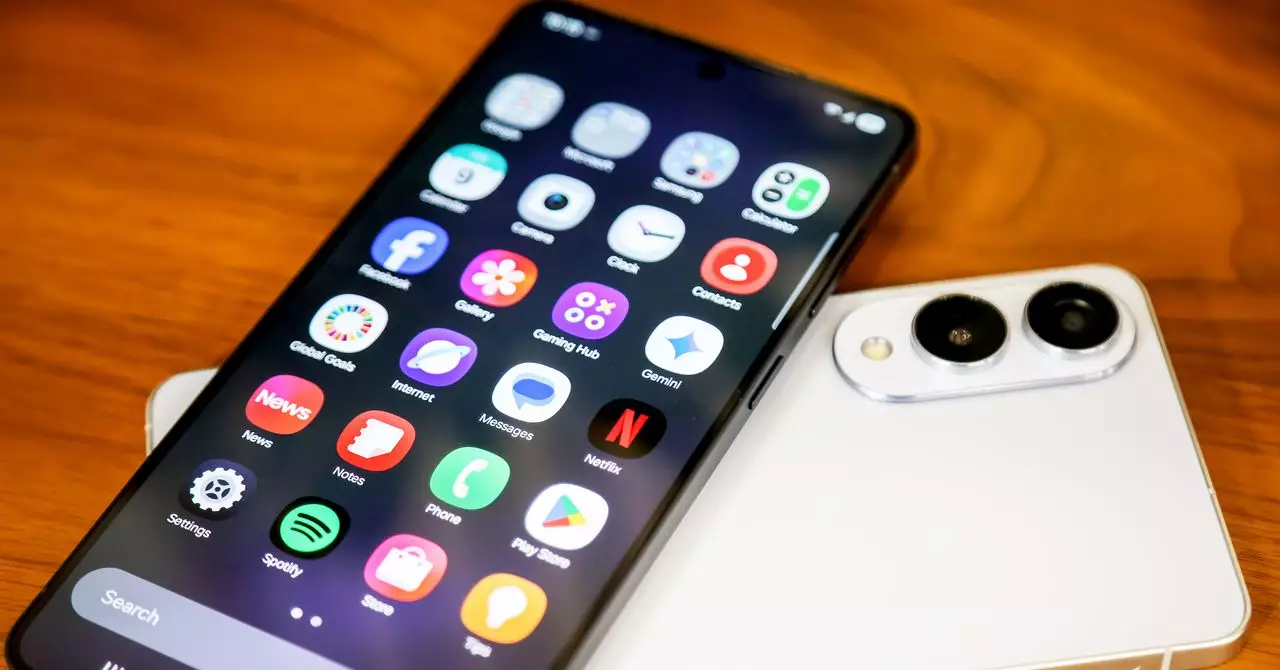In the rapidly evolving landscape of mobile technology, the integration of artificial intelligence (AI) into everyday devices promises unparalleled convenience and personalization. Brands like Samsung are pioneering this frontier, offering features that adapt to user preferences—from transcribing voice memos to creating artistic edits. However, behind the enticing promise of smarter devices lies an undercurrent of concern: data security and privacy. While companies like Samsung emphasize that all AI data is encrypted and protected, the reality is that no security system can guarantee absolute safety at all times. This creates a paradox where the benefits of AI are immediately appealing, but the potential risks cannot be entirely dismissed.
The core issue revolves around the delicate balance between usability and privacy. As users become increasingly dependent on AI-driven features, they also unwittingly expose sensitive aspects of their lives—be it personal photos, health data, or private conversations. Samsung’s approach offers users control through settings and toggles, allowing them to disable features or restrict data sharing. Nonetheless, even with these options, doubts persist about what is truly protected and what might still be at risk.
Poised Between Privacy and Innovation
Samsung’s declaration that data is “securely encrypted” puts a positive spin on their AI data handling, but it’s essential to view this within a broader context. Encryption is crucial—but not infallible. History has shown that, regardless of how robust encryption algorithms might be, vulnerabilities can emerge, especially when dealing with complex ecosystems involving cloud processing and on-device AI. For example, some AI functions, like generative edits or image manipulation, require cloud connectivity, exposing them to potential interception or breaches during data transmission.
Furthermore, the degree of transparency offered by Samsung’s privacy policies remains questionable. Users are encouraged to explore extensive online documentation; however, many consumers neither read nor understand these policies fully. As a result, they often accept features relying on cloud data processing without recognizing the underlying risks. This unbalanced information asymmetry fosters an environment where users might unwittingly trade their privacy for the allure of convenience.
From a user-experience perspective, Samsung’s detailed settings and toggle options are a token gesture towards control. But the reality is that many individuals lack the technical knowledge to comprehend what turning off certain features entails. Subtle distinctions—such as whether an AI feature should operate on the device or in the cloud—become blurred. This ambiguity can lead to a false sense of security, where users believe they are protected, but in fact, some data may still be vulnerable.
Reevaluating Trust in AI-Powered Devices
The true challenge lies in recalibrating our trust in AI-integrated smartphones. These devices are no longer just communication tools; they are repositories of sensitive information with increasing capabilities that extend into health, finance, and personal identity realms. Samsung’s claim of on-device processing for some AI features appears promising, but as the company admits, not all functions can operate locally due to technical limitations. This reliance on cloud infrastructure remains a significant security concern.
Moreover, the broader message should be one of cautious optimism. While technological advances have made AI smarter and devices more adaptable, users must remain vigilant about their privacy. Opting out of certain features or limiting data sharing is a good start, but it’s insufficient without a clear understanding of what is being shared and stored. Ultimately, trust must be earned through transparency, rigorous security measures, and empowering users with control rather than leaving them to navigate a complex and often opaque privacy landscape.
As AI continues to weave itself into the fabric of our mobile lives, we must critically assess whether the convenience it grants outweighs the potential vulnerabilities it introduces. Genuine security requires more than encryption; it demands openness and responsibility from device manufacturers—traits that are still evolving in this rapidly advancing arena.


Leave a Reply